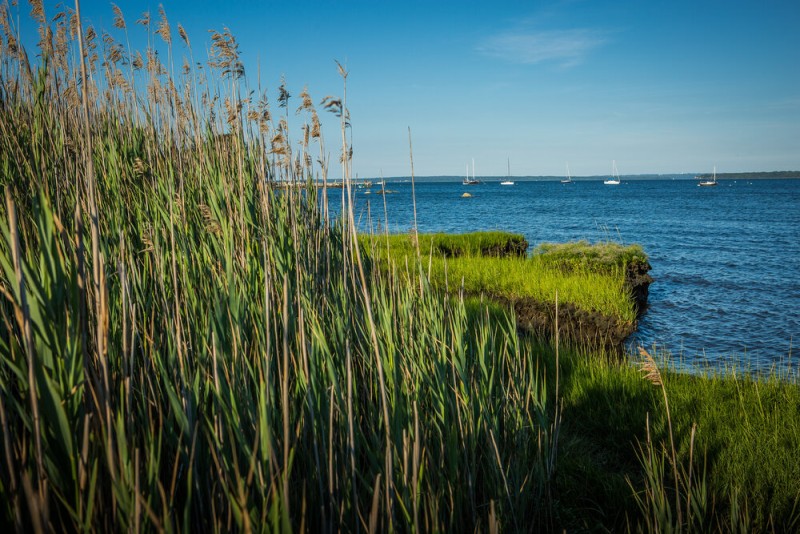
Field Notes by Rebecca Doublesin / Mar 21, 2022
The University Network for Collaborative Governance hosts a series of quarterly webinars to engage members on topics related to collaborative governance. The webinar hosted in the second quarter of 2021 explored Collaborative Governance Lessons from Estuary Programs. The panel of guest presenters represented a variety of programs and regions across the US. The presenters spoke on how diverse estuary programs around the United States have established and implemented collaborative governance models through exploring what works, what lessons have been learned, and what the future holds.
The webinar began with a brief overview of the National Estuary Program (NEP) that was created in 1987 under the Clean Water Act. The NEP is overseen by Management Conferences that work to maintain and restore 28 estuaries of national significance. The conferences focus on ecosystem-based work to assure collaboration among local stakeholders and communities. The NEP also works with a broader national governance called the Association of National Estuary Programs (ANEP), a 501(c)3 organization. The ANEP works to educate key stakeholders on improving the effectiveness of NEPS, as well as lobbying on their behalf. These two larger organizations provide a collaborative framework for the individual estuary programs across the nation.
The following portion of the webinar shifted to specific examples of the collaborative governance process taking place in a variety of local and regional estuary programs. The guest presentations opened with Ann Swanson from the Chesapeake Bay Commission, followed by Laura Blackmore from the Puget Sound Partnership, Duane De Freese representing the Indian River Lagoon, Mike Gerel from the Narragansett Bay Estuary Program, and Donald Killorn from the Pensacola and Perdido Bays Estuary Program. Each presenter provided background information as well as a closer look into the complex governance networks within their specific programs.
The first speaker was Ann Swanson, the executive director of the Chesapeake Bay Commission which serves as the lawmaking branch of the larger Chesapeake Bay Program. The complex Chesapeake Bay Program includes partners at all levels who hold equal opportunities to lead. Swanson noted that leadership in the program is dependent upon who has “the resources, the manpower or political clout to move something forwards.” She concluded that collaborative governance in the Chesapeake Bay cleanup remains focused on villagers taking action and playing to their own strengths.
The executive director of The Puget Sound Partnership, Laura Blackmore highlighted a similarly complex network within the Western Washington region. The Puget Sound Partnership is a state agency created in 2007 and is part of the NEP. The current collaborative governance structure for the program consists of seven leaders appointed by the governor, including the Salmon Recovery Board and the Ecosystem Coordination Board. The seven leaders work together to implement priority actions to implement the region's ecosystem recovery goals. In response to how the organization may improve its collaborative governance network, Swanson noted that she would speed up the integration of the Salmon Recovery Board with the Ecosystem Coordination Board and the Local Integrating organizations. In addition, she desires to further diversify the organization's councils to better represent the population they serve.
The executive director of the Indian River Lagoon, a comparatively smaller program, presented next on the collaborative governance challenges faced in this region. He spoke on the program's transition from a collaborative governance model to a real-world application of the process. Defreese concluded, “Trying to change a structure and a function of a collaborative governance model to something that is going to work in the real world is not an easy task, and it is one we are still working on very carefully.” The six-year transition for the company has focused on evolving relationships to work together as one ecosystem.
The Narragansett Bay Estuary Program is currently in the middle of a similar transition phase with implementation within the program's collaborative governance process. Mike Gerel, the executive director, distinguished that the organization is in the adaptation step of the implementation process working towards the established step. Gerel mentioned that the program aims to continue to move forward through continuing to align under one mission and vision, as well as incorporating new staff and expanding committees. He reemphasized the recurring theme that the implementation of collaborative governance is not an easy process and is one that takes time.
The final guest presenter represented the youngest estuary program within the webinar. The Pensacola Perdido Bays Estuary Program, led by Donald Killorn, was officially formed in 2018. Killorn emphasized that the program is in the upstart of the collaborative governance process. The program is currently focused on getting the organization up and reaching new heights. The organization is outside of the NEP, however, it relies heavily on the guidance of the leadership structure. The program is working to implement its first Comprehensive Conservation and Management Plan, which Killorn believes will provide space for the governance system to evolve to reach its maximum potential.
The diverse panel of guest presenters represented various estuary programs across the United States. Each speaker spoke on the challenges and rewards faced when implementing collaborative efforts within their governance structures. The key takeaways from the webinar are that collaborative governance takes time, and two important factors in the implementation process are integration and expansion. The presenters provided valuable insights on how these key factors have worked in the past and what the value of each may be moving forward.
Questions from participants:
1. What are opportunities for further engagement, training and research might be possible?
2. How might adding elements of collaborative governance address challenges and enhance your program?
3. Could we look across all estuary programs for common training and engagement for governance needs from a broader view, rather than just project-by-project?